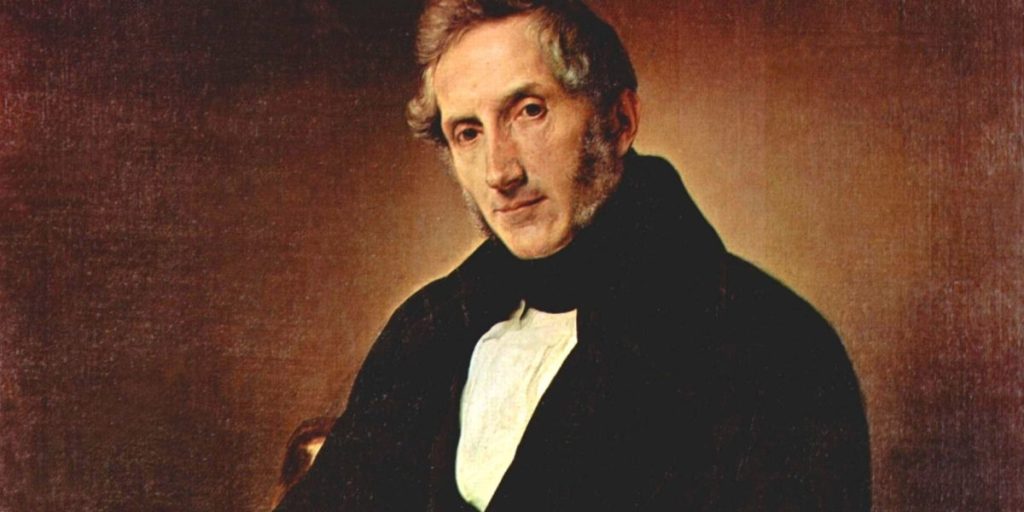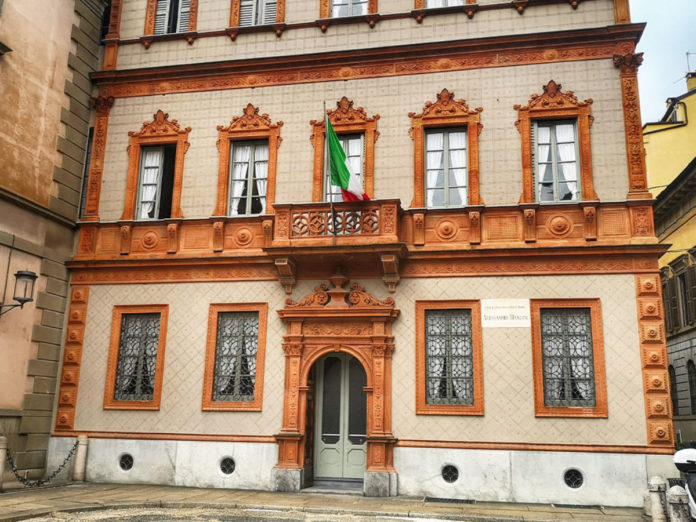Manzoni house it is a palace of historic center of Milan which was the home of the great writer Alessandro Manzoni from 1813 to his death in 1873. He experienced various vicissitudes until it became a house-museum. In recent weeks it has reopened to the public with new activities.
Alessandro Manzoni, one of the most important symbols of Italian literature
Alessandro Manzoni (1785-1873), eclectic author, is one of most important symbols of Milan in the world regarding Italian literature and culture. It was writer, poet and playwright as well as one of the biggest Italian novelists of all time thanks to his masterpiece: “ The Promessi Sposi“. It belongs to the poetic and cultural current of Romanticism and is one of the proponents ofItalian linguistic unit. He was also a political activist. For all these reasons, Alessandro Manzoni represents the most representative Italian scholar of the century e one of the fathers of the Italian language.

The Palace that houses the House-Museum
The building that now houses the museum and which was the writer's home originally belonged to Don Alberico de Felber. Manzoni bought it on 2 October 1813 at the price of 107 lire. It is an ancient and elegant apartment in the historic center of Milan, a few steps from La Scala square. Nearby stood the Numismatic Cabinet managed by his friend Gaetano Cattaneo, the Ambrosiana Library, the Braidense, the bookshops of Santa Margherita and the Contrada dei Servi. “Don Lisander“, as he was affectionately called by the Milanese, loved this place where he lived for over ninety years.
The house is spread over three floors and has a small garden. Manzoni personally looked after the garden. Particular is the facade of the building for the beautiful terracotta decoration and the remarkable entrance door to the house, worked and dominated by a small balcony. Alessandro Manzoni's house reflects him in all respects and represents one typical Lombard Renaissance house.
The building welcomed the writer, his children and his second wife Teresa Borri Press. Manzoni had it restored by the architect Andrea Boni in 1864 who created the particular facade.
The palace after Manzoni's death
After the writer's death, the building was sold and purchased by Count Bernardo Arnaboldi Gazzaniga, who, respectful of the memory, allowed visits to the study and bedroom on the anniversary of the «Illustrious Defunto». In 1919 the house passed to Attilio Villa and in 1922 to the Dubini brothers. In 1937, having become the property of the Cassa di Risparmio delle Provincie Lombarde, it was donated by the latter to the City of Milan provided it was intended for perpetual and exclusive use to National Center for Manzonian Studies. The building was badly damaged due to the wars. A restoration and restoration was carried out to bring the house back to the condition it was in when Manzoni died. A new restoration was carried out on the occasion of the Expo 2015, . Today is a cultural pole open to scholars and lovers of Manzoni.

The Manzoni Museum
The museum was inaugurated and opened to the public in 1965. It occupies the entire first floor and two rooms on the ground floor; here they are studio by Manzoni, the bedroom , Grossi room, now Sala degli Amici, where Manzoni used to welcome close friends and illustrious guests, who will become increasingly numerous and frequent. The two rooms are national monument.
La house-museum has undergone considerable improvements over the years on a logistical and organizational level.
In the museum rooms there are numerous portraits of the writer, his family and friends, paintings, autographs and documents of great interest, as well as the first or more rare editions of his works, numerous oil paintings and prints depicting The Betrothed, first historical novel in Italian. There are the original furniture, as well as the floor but also particular objects such as: the last embroidery of Queen Marie Antoinette of France that she kept in prison, before ending up under the guillotine, or tools of the writer such as the snuffbox, walking sticks, cape, top hat, umbrella, his glasses, paintings that recall the famous "Farewell to the mountains “. It seems that you breathe the essence of her.
Explanatory panels illustrate the various objects and rooms well. The guided tour of the various rooms, lasting approximately one hour, is aimed at making known the family, personal and social life of the writer and his personality.
The new layout of Casa Manzoni
ll Manzoni Museum offers an all-round cognitive path on the life and works of Manzoni; has been rethought with a new scientific approach, according to the most up-to-date museological and museographic guidelines, thanks to the contribution of Board of Directors and Advisory Committee of Casa Manzoni and under the supervision of Professor Fernando Mazzocca.
The museum itinerary, set up by Michele De Lucchi, offers a visit to Casa Manzoni in ten sections, which retrace, through the furnishings and works of art displayed in the rooms, various itineraries in the life and work of the writer. In the studio Manzoni welcomed Cavour, Garibaldi e Giuseppe Verdi. The library has many volumes, including valuable ones; the bedroom still has the original bed and furniture.
A structure to visit to enhance Casa Manzoni, to learn more about this giant of literature and cultural history of our country.
Info: https://www.casadelmanzoni.it/





